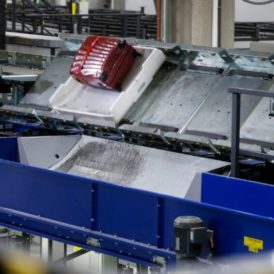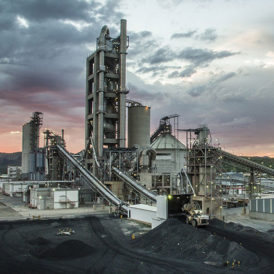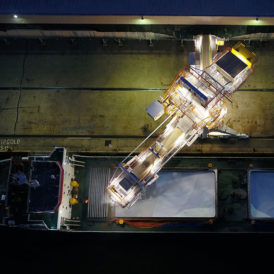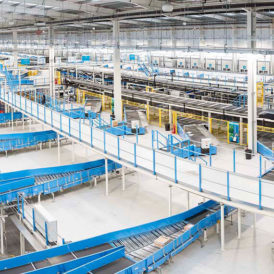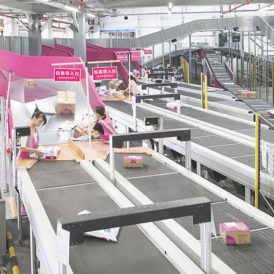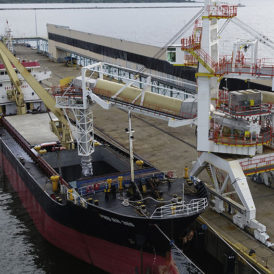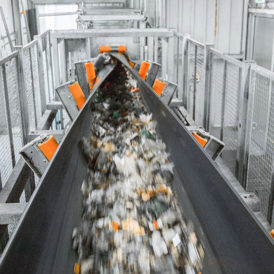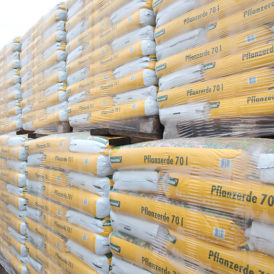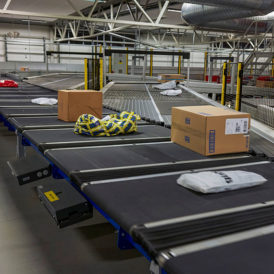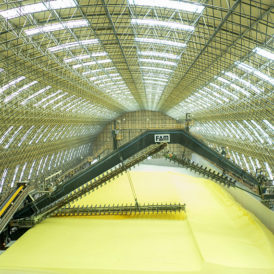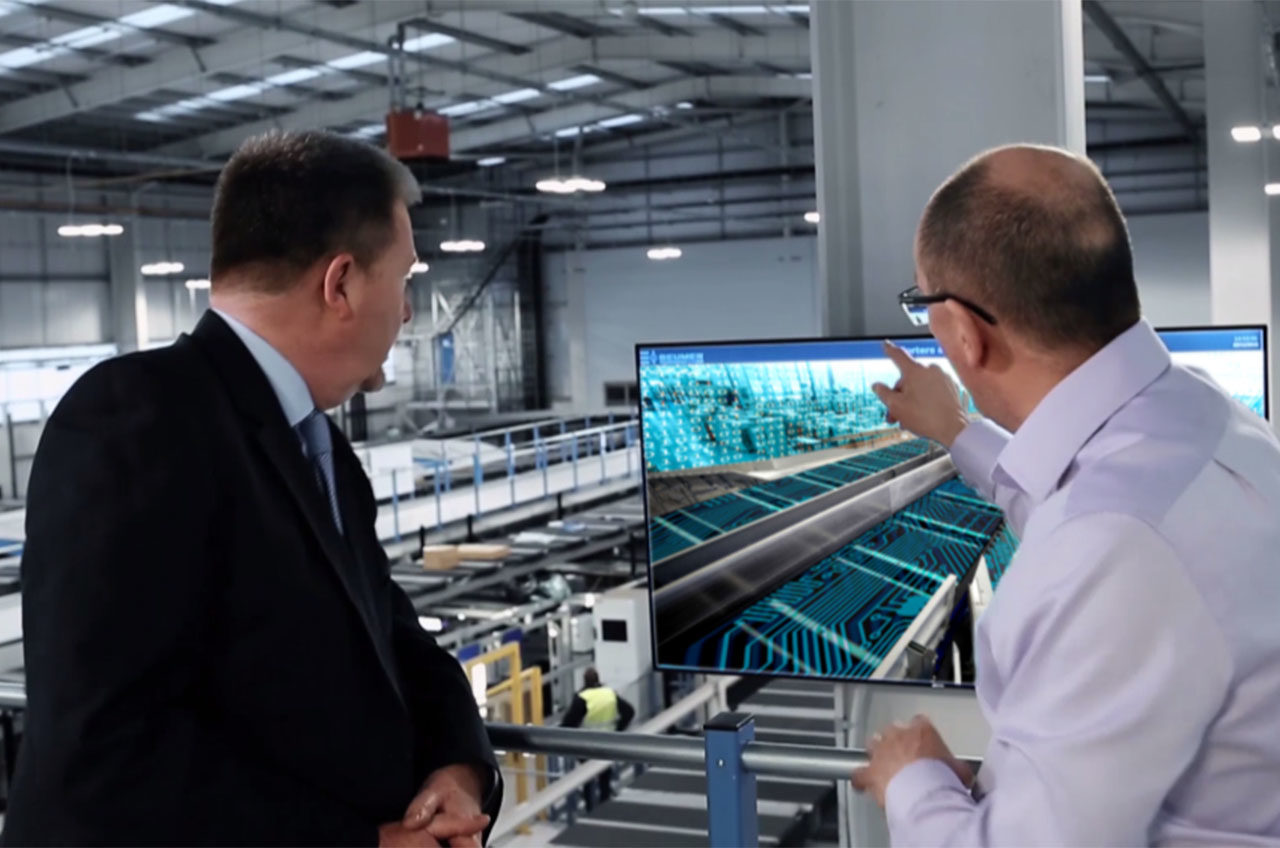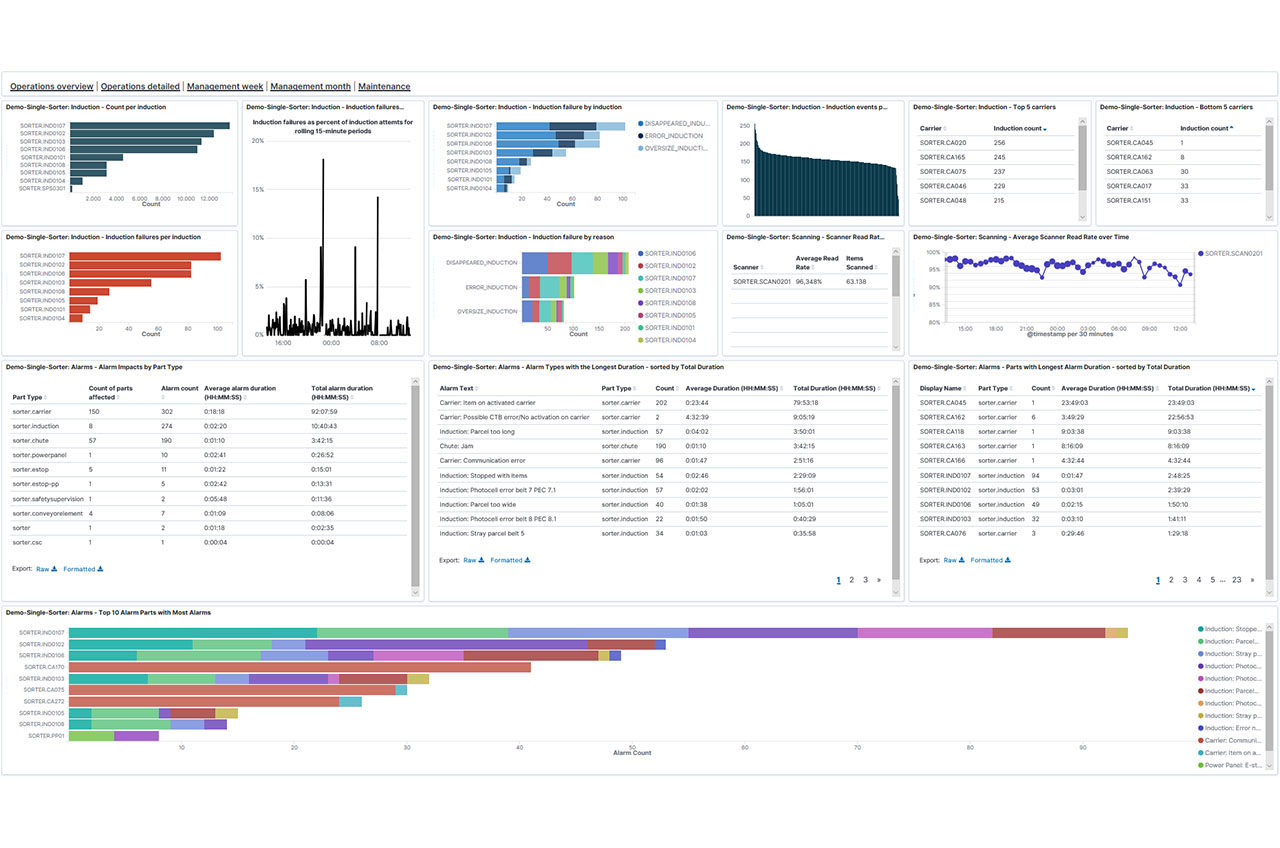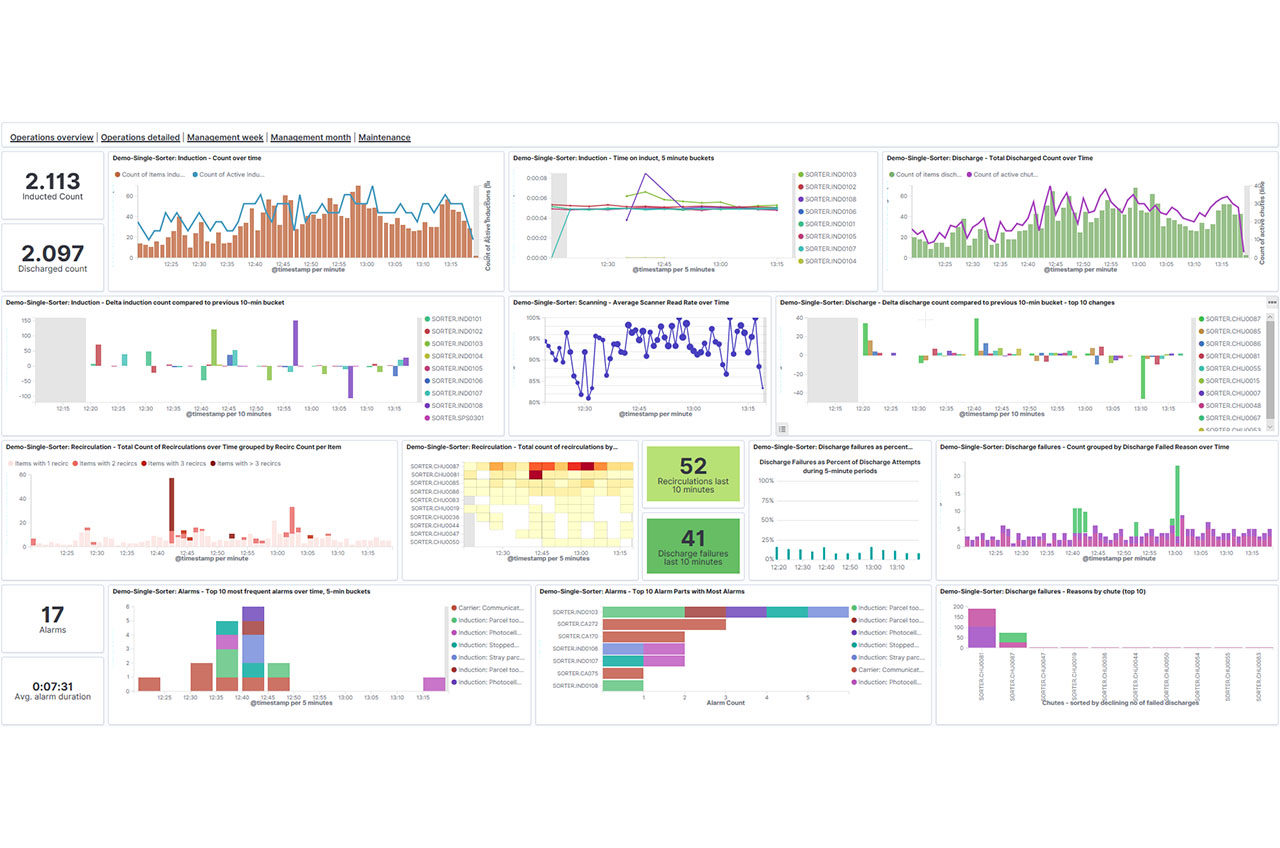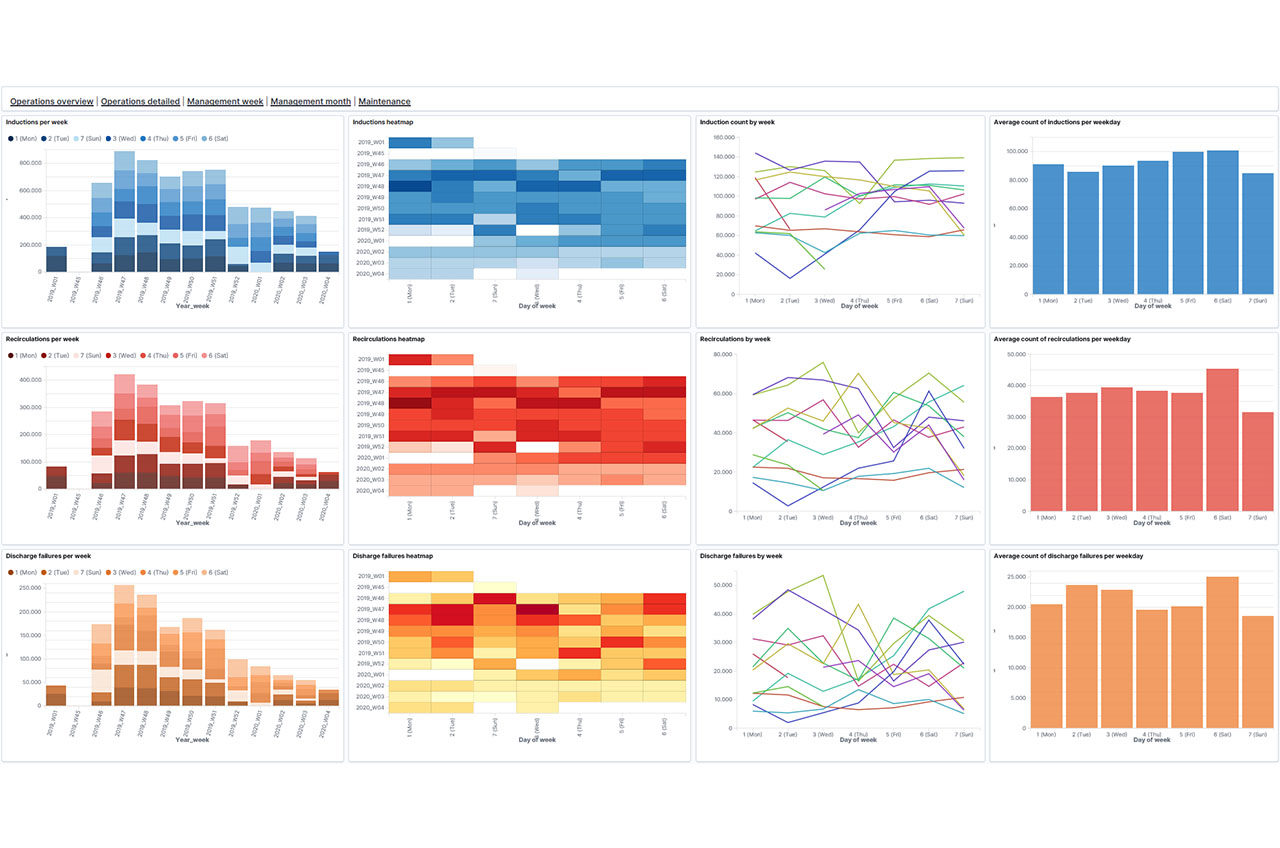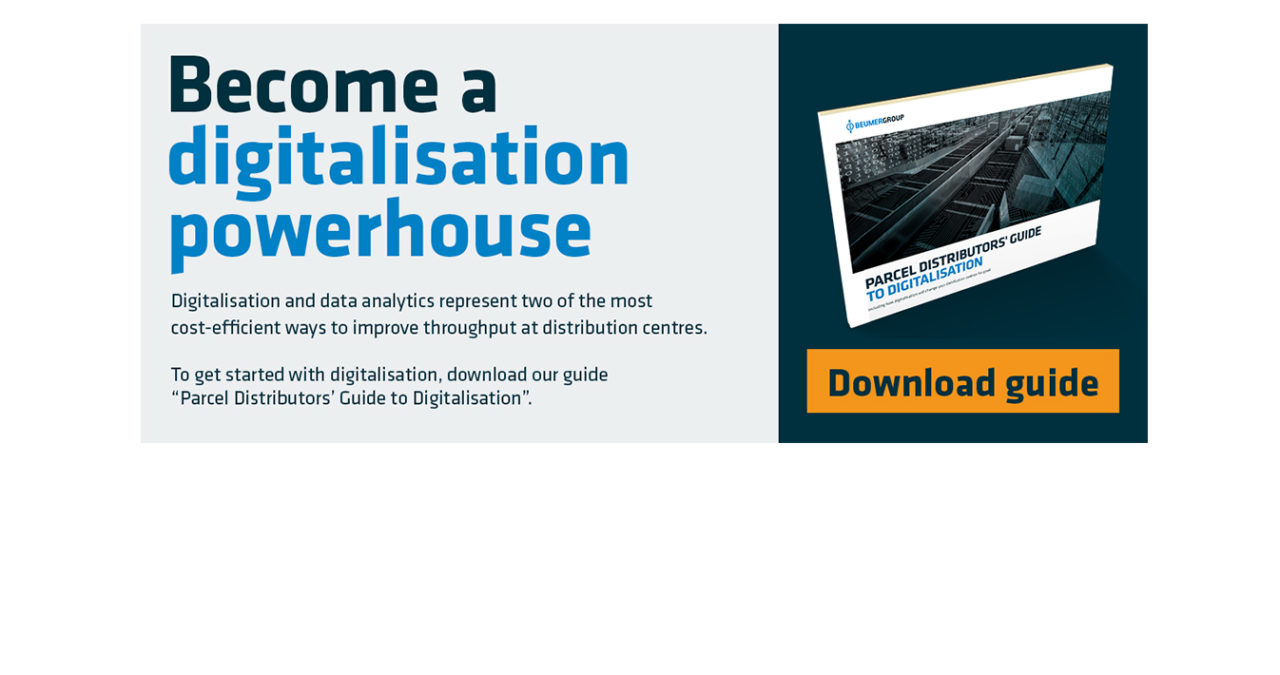Decision science on the operational level
Decision science is a type of artificial intelligence that helps operators achieve the optimal utilisation of a sortation system.
By analysing data, the algorithms identify the best use of chute destinations in relation to parcel mix, for example. Or the best allocation of operators. Or any other sortation related conundrum.
And it is real-time analysis, so operators always have an efficient and data-based strategy at their disposal to navigate the complex balancing act between parcel mix and sortation capacity.
The result is that operators won’t have to rely on simplified strategies such as pairing postal codes and chutes. Data will reveal how the system is utilised most efficiently – and propose a decision to the operators.
Decision science is just one part of it though. Through the study of algorithms and statistical models, machine learning warns operators of under-utilisation in parts of the system or workforce or upcoming incidents such as bottlenecks.
The achieved outcome is a sortation system working close to maximum capacity.
3. Management
By comparing data from previous parcel productions and forecasting future productions, management can settle on the best use of resources.
Distribution centres can learn more efficiently from previous experience to improve future operations – e.g. in terms of hiring and allocating operators and resources.
Forecasting and other strategic challenges
By every indication, e-commerce is only going to increase. There is also a growing number of peak shopping holidays and special occasions that present their own unique challenges to distribution centres.
A growing, increasingly complex and more varied parcel mix combined with numerous peak seasons results in a more difficult future to navigate in. At the same time, competition in the CEP industry – and consumer expectations – will give rise to more demanding delivery services in intervals of six or twelve hours for example.
In the future, management at distribution centres will need to become better at learning from experience and planning future production. This requires a detailed and accurate assessment of past and future production.
Thankfully, this is exactly what data analytics provide.
